Exhibition
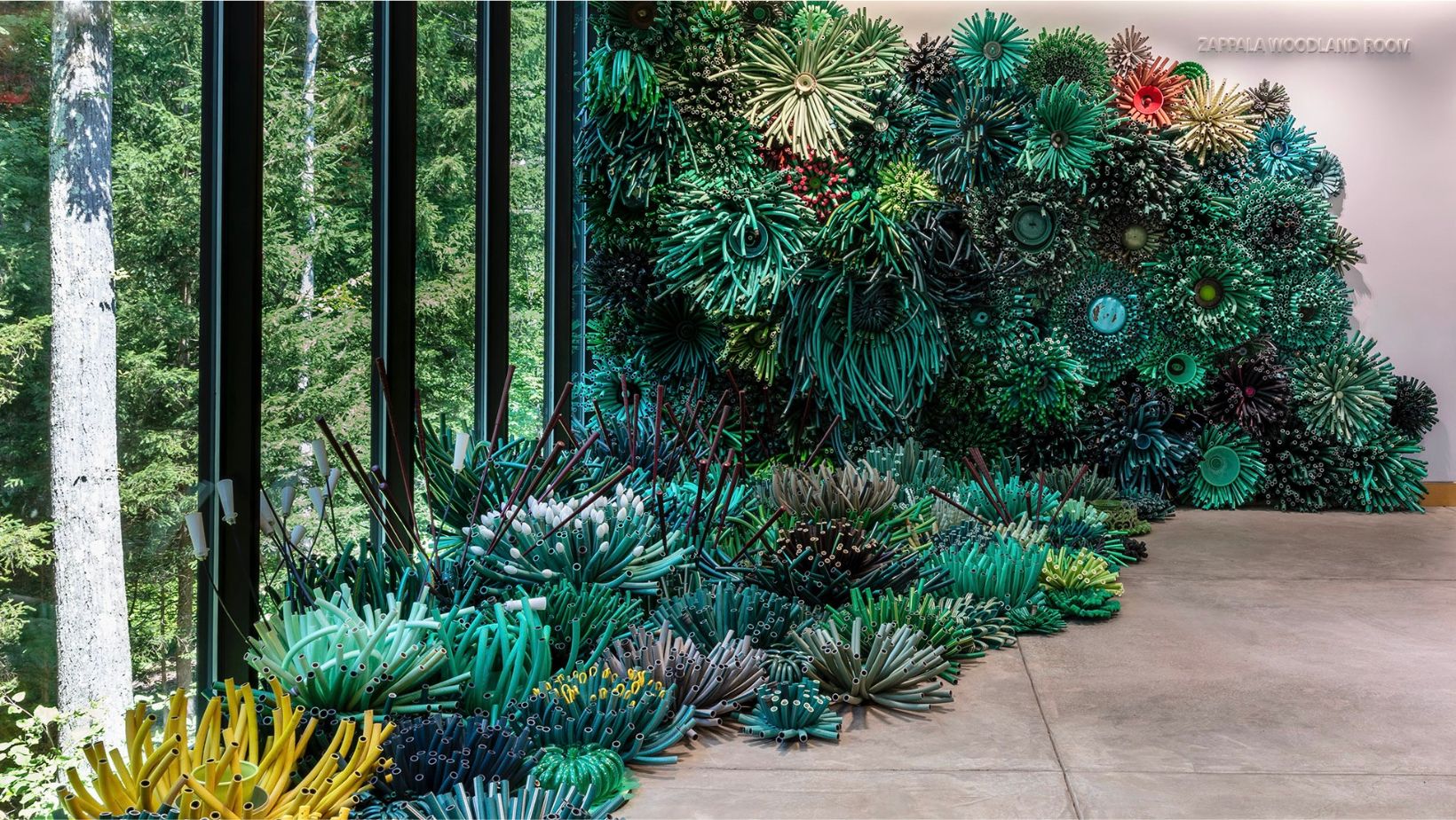
Peculiar Beauty
Nature Examined
Sun, Mar 17, 2024 to Sun, May 5, 2024
Exhibition Details:
Peculiar Beauty: Nature Examined transforms the museum into a strange landscape of otherworldly art. This exhibition takes an unusual view of the intrinsic beauty of nature through varying scales of installation, paintings that evoke moods and reflection, sustainability, and sculptures from the earth.
Additional Images:
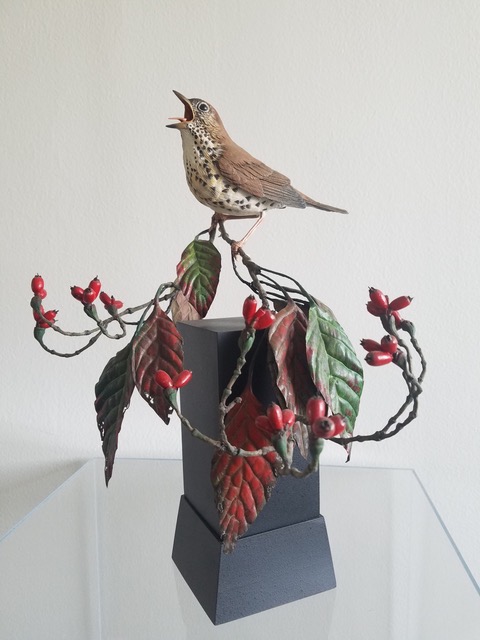
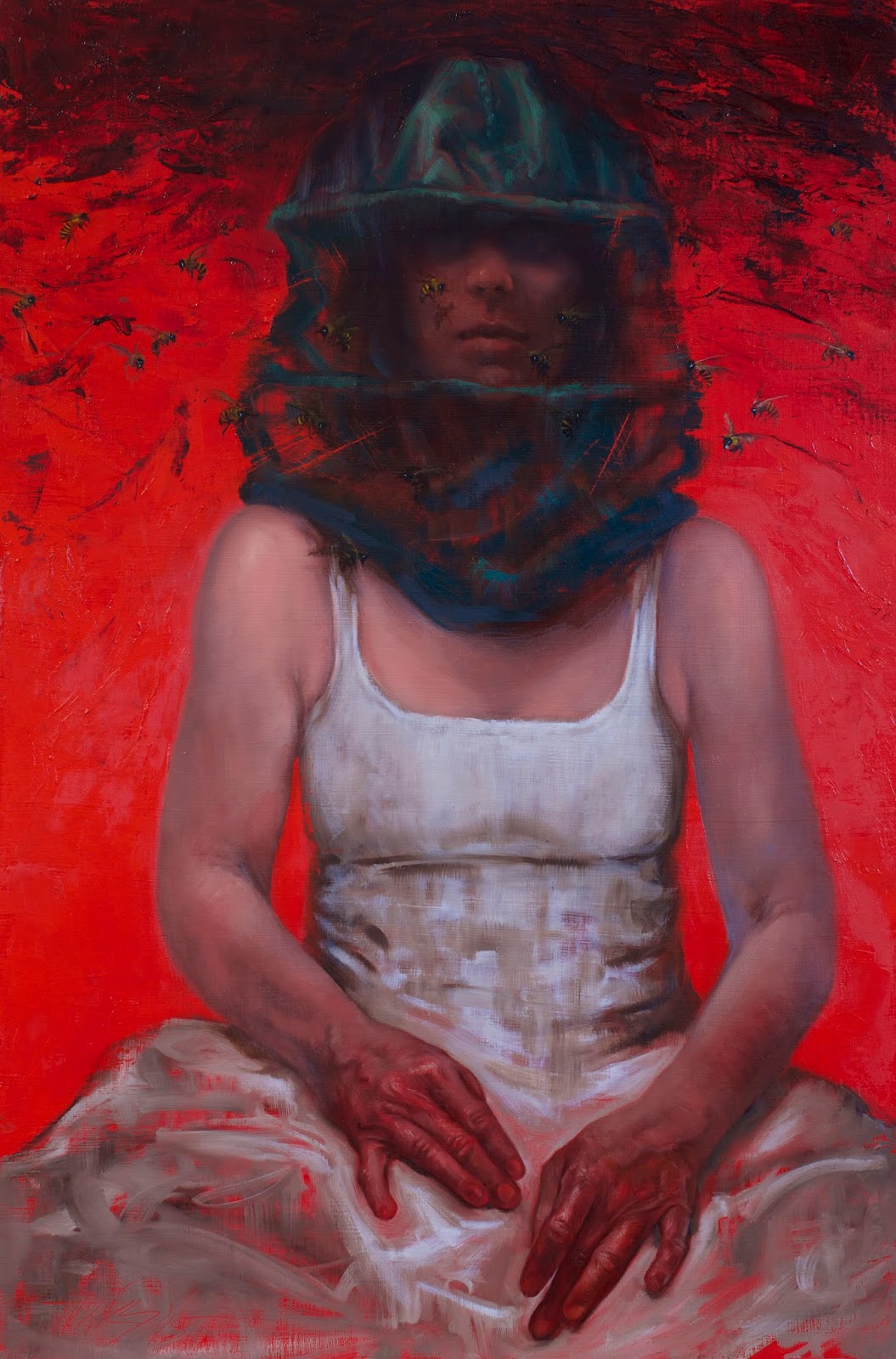
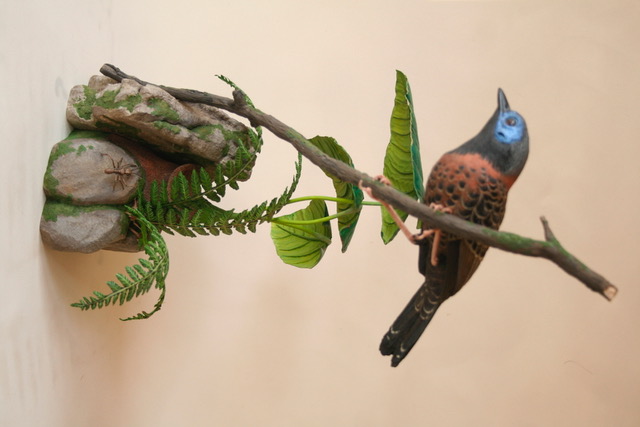
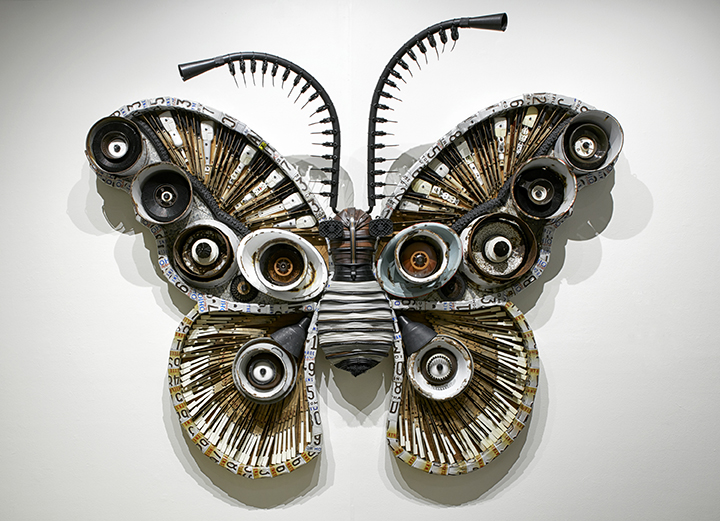
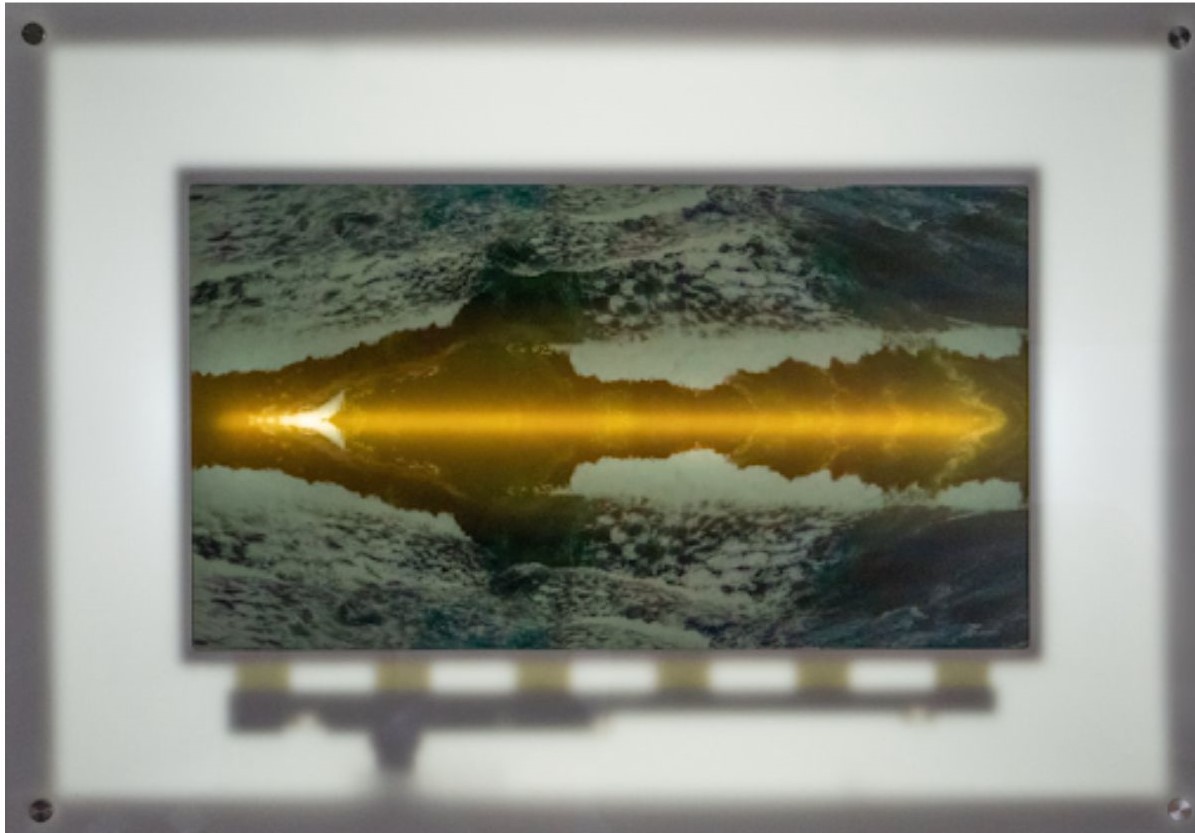
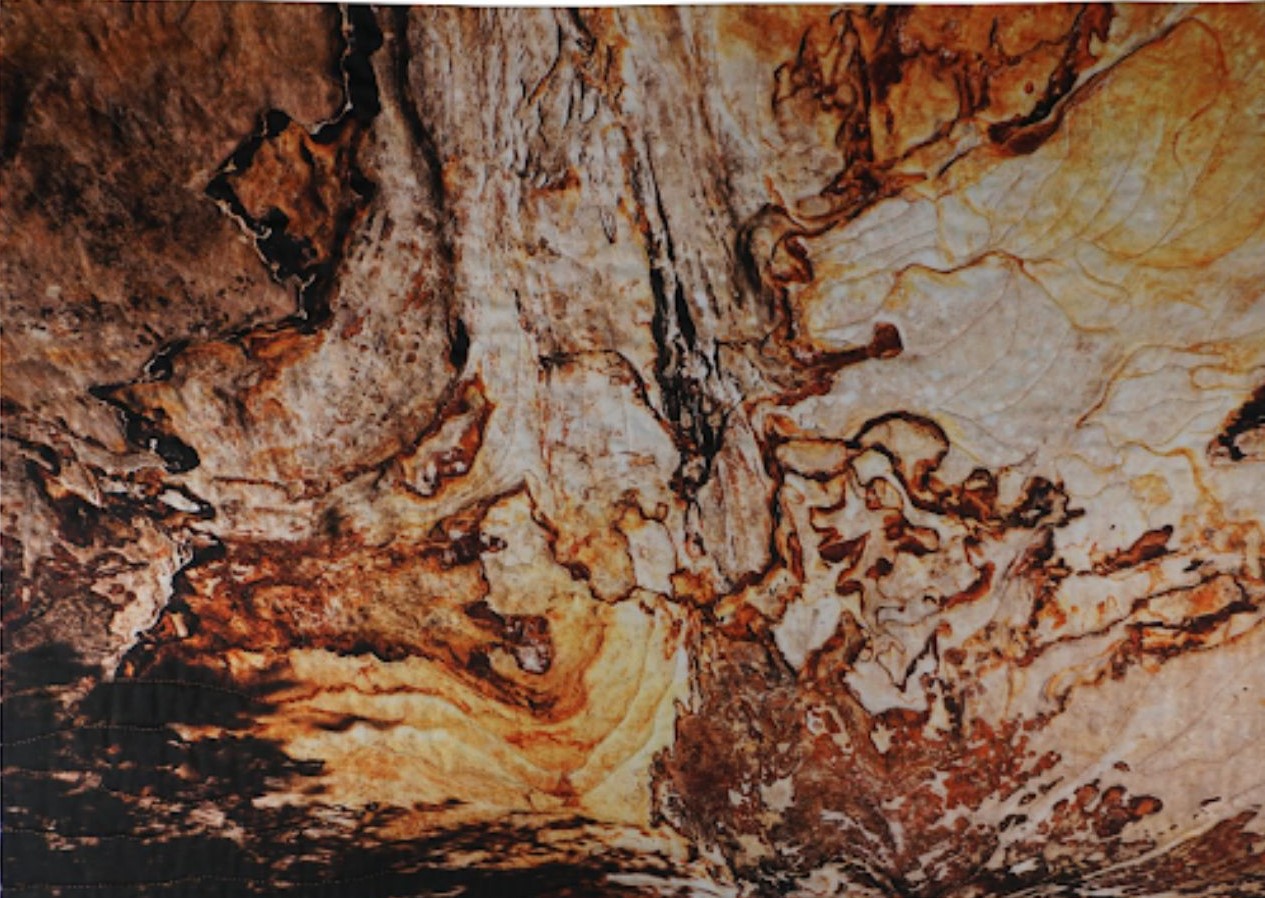
Exhibitors:
My work might draw you in as a celebration of abundant green, lush flora. But after first glance, a realization may dawn that there is a mass of mundane, broken and outdated household detritus, normally destined for a landfill, within each piece.
The Fynbos Series is titled after the dry ecological region in South Africa in which the Protea bush grows. Protea is a tough, flowering plant full of round colorful blooms composed of needle-like bracts and pistils. But my work in this series is also inspired by mosses, lichens, fungi and succulents found in the US - all of which are also known for their rainfall needs and/or moisture retaining habits.
Two artist residencies in national parks have greatly influenced my work in regard to conservation and observation of the natural world. The repurposed materials I utilize speak to my concerns about the environment and climate change and because the series is comprised of mostly old garden hoses, it also begins a conversation in regards to water consumption and waste. Large suburban mowed lawns and watered yards rife with invasive plantings are examples of an economically affluent country ignoring scientific statistics. In turn, the series is simultaneously an insult and a tribute to nature, for the imagery that was created may have perhaps been due to the very destruction and extraction of natural resources needed to produce the materials I utilize.
Michelle Stitzlein
Lori Esposito’s transdisciplinary artistic practices move across performance and drawing and painting troubling issues and narratives about femininity, beauty, and motherhood. Navigating plant and human geographies with intercultural rituals, dream diaries, and more, she seeks generative spaces for healing. Situated in lineages of land-based art, ecological writing and feminist performance, Esposito's work drifts away from representational forms and back again. Her writing, performance and visual art often moves rhythmically, flowing and changing states while entangled with human and non-human temporalities.
Esposito’s 2D illustrative work focuses on memory and image making in dialogue with folklore, games, graphic novels, and tarot cards that symbolically relate women’s domestic experiences with horticulture and spells. Professionally trained in illustration her work breaks from the continuity and morality of the Golden Age of illustration, and Grimms fairy tales to generate fragmented stories without a book. Her montages and vignettes invite a readerly approach, where audiences may participate by filling in voids or gaps with their own experiences.
Esposito's work has received support from the Ohio Arts Council, the Ucross Foundation, Virginia Center for Creative Arts, and the Santa Fe Arts Institute, and more. She has taught and lectured at the University of Edinburgh, and Bauhaus University, and The Rhode Island School of Design cultivating embodied drawing in public group settings. Exhibitions at the Turchin Center, the North Carolina Museum of Art, the Weatherspoon Art Museum, Soo Visual Arts, the Beverly Art Center and Urban Arts Space and the Carnegie Museum of Art and History have supported her artistic research in grief and healing. Her exhibitions, residencies and programming span museums, K-12 schools, universities, community centers and non-profit organizations.
Esposito is a doctoral candidate in the Arts Education, Administration and Policy department at The Ohio State University where she is developing writing and artistic practices accessible to neurodiverse audiences and learners.
Tom Baldwin is an internationally award winning wildfowl carving artist. He received 2nd Best in the World at the 2017 Ward World Wildfowl Carving Championship, M & T Printing purchase award at the Canadian National Wildfowl Carving Championship, and has won back-to-back Best in Shows at the Wings and
Water Festival, award of excellence at the 2014 Kaleidoscope Holiday show, 1st place at the 2015 Kaleidoscope Holiday show, top 5 runner up for the Akron Art Prize 5 years in a row and Best of Show at the 29th Annual Regional Juried Art Show at the Cuyahoga Valley Art Center. Tom also received the best sculpture award at the 70th Annual Ohio Exhibition at the Zanesville Museum of Art. Tom lives in Akron with his wife, Barbara, and their dog, Beanie.
You can see more of Tom’s work on his website:
songofwood.com
Saving the world, one painting at a time, I use classically inspired painterly figurative realism to drive home messages of female empowerment, dispel misogynistic stereotypes and fight for reproductive freedom.
Serenity Prayer: Acceptance was part of a series of works exploring life, death and remembrance, created during the tumultuous time in my life when my elderly parents both passed away within a six-month period. The beekeeper mask, protection from the surrounding swarm and chaos, is metaphor for fixing what I could, accepting what I couldn’t and trying to manifest the wisdom to know the difference.
My current series, The Goddess Project, re-imagines mythological characters from all religions through a contemporary feminist lens. These age-old legends have seeped into our culture to plant damaging female stereotypes. Arachne, Predator and Prey revisits the Greek myth where powerful Goddess Athena smites talented mortal Arachne for besting her in a tapestry weaving contest. Restoring Arachne’s humanity, even as the brutality of being turned into a spider takes hold, I posit that powerful women should support and nurture our younger aspirants; we are stronger together. My figurative work portrays women as courageous, resilient, heroic and in charge. At the same time, we are not idealized…I paint real women as I attempt to truthfully depict a living, breathing soul whose presence invites viewers to linger, connect and think.
Judy Takács
After more than 20 years teaching physics and math in high school, I retired and returned to my skills in sewing for amusement and to fill the hours that I now had free. To my surprise, this hobby turned into something more as the allure of art quilts drew me in and I discovered the large, vibrant, active, and talented community of art quilters. Soon I was entering shows and getting accepted and now my quilts are traveling in exhibitions around the country.
Although born in Germany I left on my third birthday and settled in England with my family for six years. At the age of nine we moved to Baltimore, Maryland, where I finished my education, got married, and had my first child. After a couple of years in Chicago my husband and I settled in Columbus, Ohio, and raised our own family. All during those early years I sewed clothes for everyone in the family. I loved that act of creation. Times changed, I went to work as a teacher, and clothes could be bought for less than the price of fabrics, so my skills languished until my retirement.
My quilts have changed over the years, from piecing commercial fabrics, to creating my own fabrics from personal photographs. In retirement my husband and I have hiked extensively in the American Southwest with camera in hand capturing images of rocks, of trees, of the landscape. These images now form the basis of my work. Through the use of the computer, I can slice and dice them and create a new world of my own filled with color and design that evoke the beauty of nature. Each quilt is my homage to nature’s creativity.
My quilts have been selected for more than 70 competitive, juried exhibitions nationwide and several have been chosen by SAQA (Studio Art Quilt Association) for international traveling shows that travel around the country for several years. At the San Diego Quilt Visions exhibit my quilt “Into the Abyss”
won the “Caught Our Eye” award.
I have also been an active leader in the Art Quilt Network, a national
organization dedicated to advancing the art.
Claudia Esslinger is a visual artist working in media-based installation, video layering and projection, new media video constructs and collaborative performance. Her installations often invite interactivity using micro-controllers and sculptural components. Her single and multi-channel video projections include those appropriate for gallery exhibitions, film festivals or as components for music or dance performances. A common thematic thread through her projects is a poetic exploration of inequities and inconsistencies in both the human and natural worlds. By juxtaposing challenging and ironic elements within provocative aesthetic forms, she opens her work to a wide range of interpretation. Esslinger’s work often includes visceral props that embrace a performer or receive moving projections. From rawhide and pig intestine to rust covered divining rods, from the pulsing of mechanical bellows to a notched stick measuring drops of water, her explorations are meant to elicit visceral experiences. Natural surfaces are often bracketed by clean industrial or technical elements; such as stainless-steel mesh or high-definition displays. Viewers are invited to immerse themselves, often affecting changes in various components through physical manipulations. The projections of single-channel digital films are formatted to function as gallery installations or as film festival “shorts.” Multi-channel works and video loops are more suited to gallery exhibition with multiple displays or projections, although single-channel versions of these are sometimes appropriate and available. Collaboration with composers, writers, scientists, performers, and dancers have enhanced Esslinger’s semi-narrative, semi-abstract video projects. Collaborations also have led to live control of video (using interactive software) or to
screenings during live performances. These presentations have taken place internationally including in Seoul and Berlin. Esslinger has been the recipient of seven Ohio Arts Council Individual Excellence Awards and a
New Forms Regional Grant (NEA). Artist’s residencies include the Omora Ethnobotanical Preserve near Cape Horn (2009), Headlands Center for the Arts in Sausalito, California (2007), Singing Pictures workshop in Seoul, South Korea (2000) and the Grafikwerkstaadt in Dresden, Germany (1999). As Professor of Art at Kenyon College, Esslinger teaches courses in Digital Imaging, Experimental Film and Video, Stop-Motion Animation, Installation Art and Advanced Studio.
Eli Betchik is a jeweler obsessed with invertebrates. Through her work in silver, gold, copper, gemstones, and the occasional dead bug body part she explores the forms of insects, arachnids, myriapods, and annelids. Betchik graduated with a degree in Jewelry and Metalworking from the Cleveland Institute of Art in 2021 and has shown work in various gallery shows around the northeast Ohio Area. Aside from bugs, Betchik takes inspiration from various natural and/or macabre sources including mold, Victorian mourning jewelry, and lichen.
